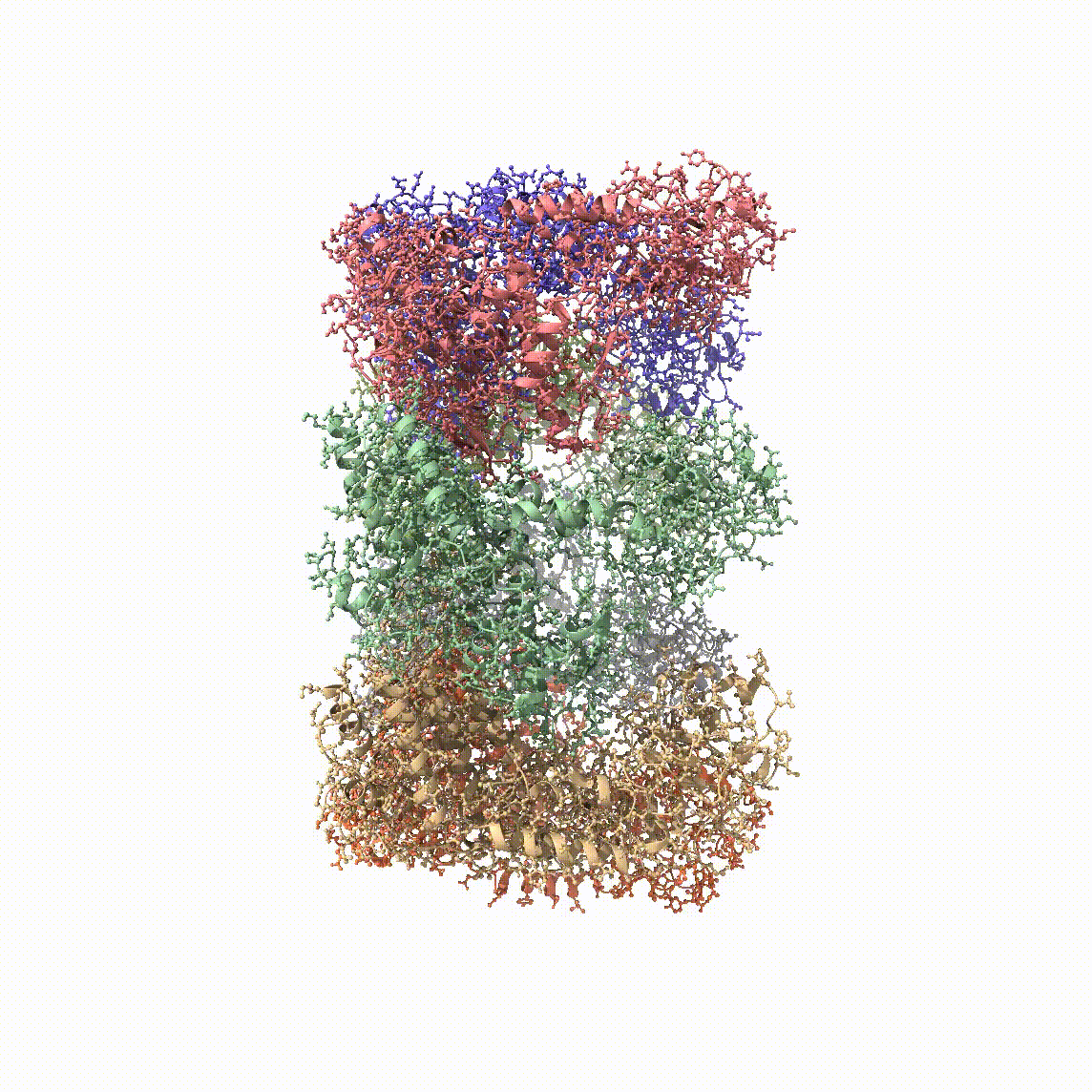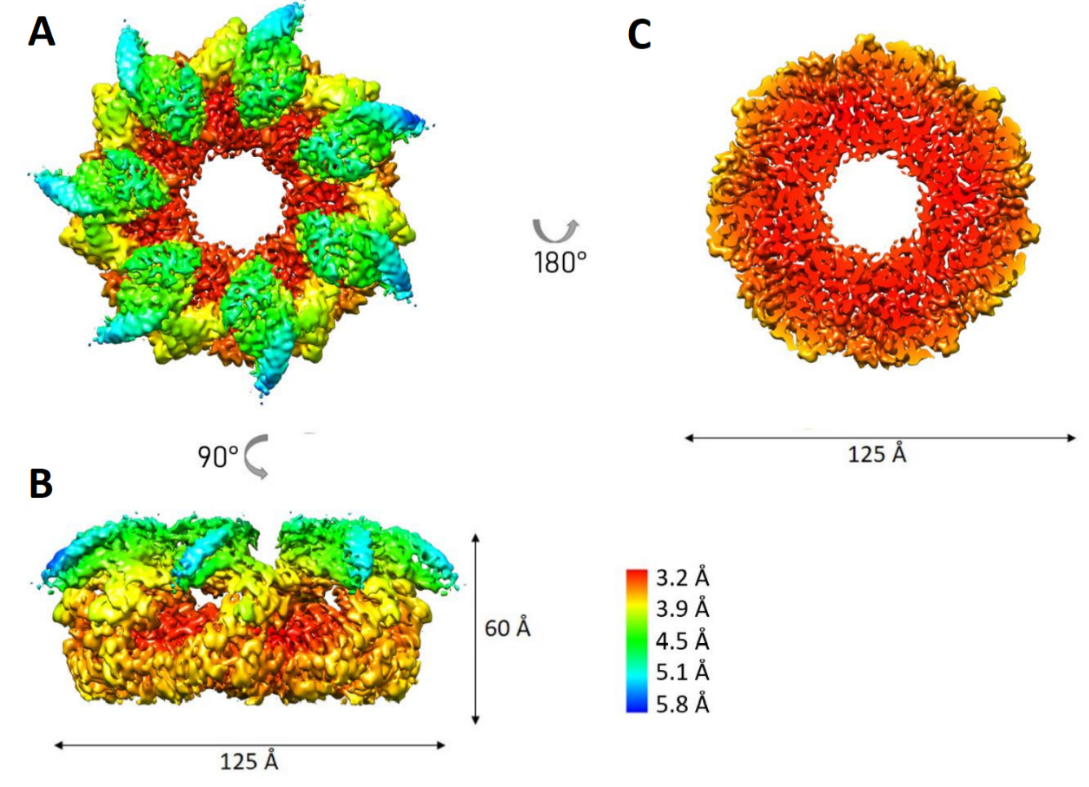Шаперонины
Шаперонины — это повсеместно присутствующие белковые комплексы, которые способствуют правильному сворачиванию вновь синтезированных белков и предотвращают агрегацию денатурированных белков, используя энергию АТФ. Они подразделяются на группу I (бактериальные, митохондриальные, хлоропластные шаперонины) и группу II (архейные и эукариотические цитозольные варианты). Однако обе эти группы не включают недавно открытые вирусные шаперонины.
Публикации группы по направлению
Novel cryo-EM structure of an ADP-bound GroEL–GroES complex
Sofia S. Kudryavtseva, Evgeny B. Pichkur, Igor A. Yaroshevich, Aleksandra A. Mamchur, Irina S. Panina, Andrei V. Moiseenko, Olga S. Sokolova, Vladimir I. Muronetz & Tatiana B. Stanishneva-Konovalova
The GroEL–GroES chaperonin complex is a bacterial protein folding system, functioning in an ATP-dependent manner. Upon ATP binding and hydrolysis, it undergoes multiple stages linked to substrate protein binding, folding and release. Structural methods helped to reveal several conformational states and provide more information about the chaperonin functional cycle. Here, using cryo-EM we resolved two nucleotide-bound structures of the bullet-shaped GroEL–GroES1 complex at 3.4 Å resolution. The main difference between them is the relative orientation of their apical domains. Both structures contain nucleotides in cis and trans GroEL rings; in contrast to previously reported bullet-shaped complexes where nucleotides were only present in the cis ring. Our results suggest that the bound nucleotides correspond to ADP, and that such a state appears at low ATP:ADP ratios. DOI

Cryo-EM reveals an asymmetry in a novel single-ring viral chaperonin
Tatiana B. Stanishneva-Konovalova, Pavel I. Semenyuk, Lidia P. Kurochkina, Evgeny B. Pichkur, Alexander L. Vasilyev, Mikhail V. Kovalchuk, Mikhail P. Kirpichnikov, Olga S. Sokolova
Chaperonins are ubiquitously present protein complexes, which assist the proper folding of newly synthesized proteins and prevent aggregation of denatured proteins in an ATP-dependent manner. They are classified into group I (bacterial, mitochondrial, chloroplast chaperonins) and group II (archaeal and eukaryotic cytosolic variants). However, both of these groups do not include recently discovered viral chaperonins. Here, we solved the symmetry-free cryo-EM structures of a single-ring chaperonin encoded by the gene 246 of bacteriophage OBP Pseudomonas fluorescens, in the nucleotide-free, ATPγS-, and ADP-bound states, with resolutions of 4.3 Å, 5.0 Å, and 6 Å, respectively. The structure of OBP chaperonin reveals a unique subunit arrangement, with three pairs of subunits and one unpaired subunit. Each pair combines subunits in two possible conformations, differing in nucleotide-binding affinity. The binding of nucleotides results in the increase of subunits’ conformational variability. Due to its unique structural and functional features, OBP chaperonin can represent a new group. DOI

Local Flexibility of a New Single-Ring Chaperonin Encoded by Bacteriophage AR9 Bacillus subtilis
Olga S. Sokolova, Evgeny B. Pichkur, Ekaterina S. Maslova, Lidia P. Kurochkina, Pavel I. Semenyuk, Petr V. Konarev, Valeriya R. Samygina, Tatiana B. Stanishneva-Konovalova
Chaperonins, a family of molecular chaperones, assist protein folding in all domains of life. They are classified into two groups: bacterial variants and those present in endosymbiotic organelles of eukaryotes belong to group I, while group II includes chaperonins from the cytosol of archaea and eukaryotes. Recently, chaperonins of a prospective new group were discovered in giant bacteriophages; however, structures have been determined for only two of them. Here, using cryo-EM, we resolved a structure of a new chaperonin encoded by gene 228 of phage AR9 B. subtilis. This structure has similarities and differences with members of both groups, as well as with other known phage chaperonins, which further proves their diversity. DOI
